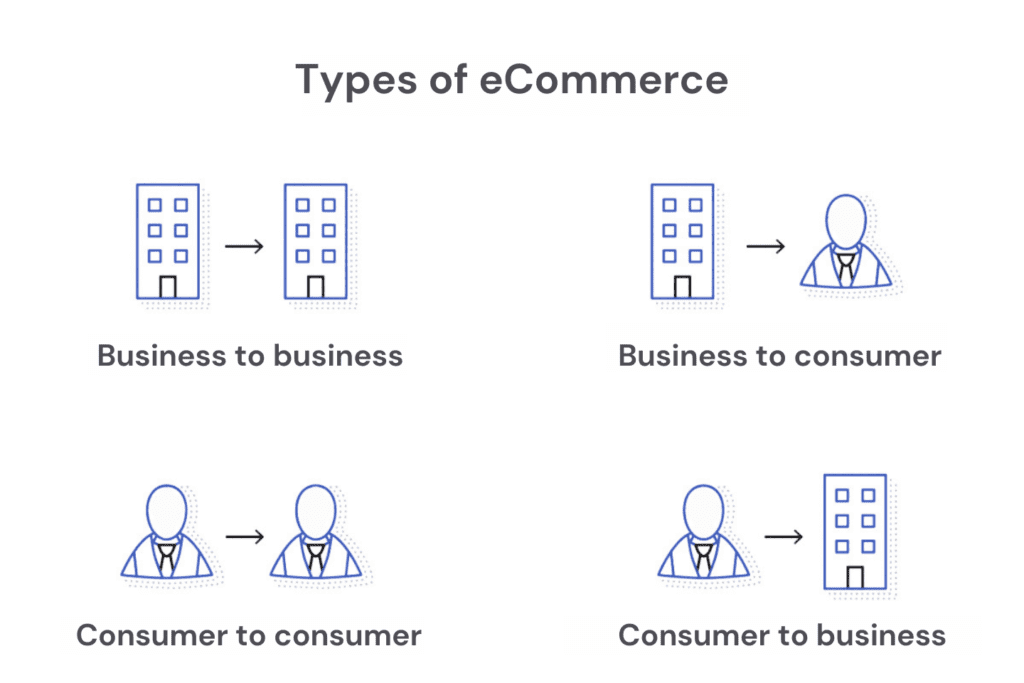Ecommerce Growth Strategy
In the fast-paced world of online commerce, having a well-defined and dynamic growth strategy is the key to staying ahead of the competition. Let’s dive into the intricacies of crafting a successful ecommerce growth strategy that not only propels your business forward but also ensures sustainable success.
What is Ecommerce
E-commerce, short for electronic commerce, refers to the buying and selling of goods and services over the internet. It involves online transactions between businesses and consumers or between two businesses. In the world of e-commerce, traditional brick-and-mortar barriers are removed, allowing people to shop, sell, and conduct business virtually.
E-commerce encompasses a wide range of activities, including online shopping, electronic payments, online banking, and digital marketing. The entire process involves the use of electronic systems, such as computers or mobile devices, and the internet to facilitate the exchange of products or services.
Types of ecommerce

E-commerce, or electronic commerce, comes in various forms, catering to different business models and consumer needs. Here are some common types of e-commerce:
- Business to Consumer (B2C):
- Definition: B2C e-commerce involves transactions between businesses and individual consumers.
- Example: Online retail stores, such as Amazon or eBay, where consumers purchase products directly from businesses.
- Business to Business (B2B):
- Definition: B2B e-commerce focuses on transactions between businesses, where one business sells products or services to another.
- Example: Wholesale suppliers selling products to retailers or manufacturers purchasing raw materials from suppliers online.
- Consumer to Consumer (C2C):
- Definition: C2C e-commerce involves transactions between individual consumers. Online platforms act as intermediaries, facilitating the exchange.
- Example: Online auction websites like eBay, where individuals sell products to other individuals.
- Consumer to Business (C2B):
- Definition: In C2B e-commerce, individual consumers offer products or services to businesses.
- Example: Freelance platforms where individuals provide services, and businesses hire them for specific tasks or projects.
- Mobile Commerce (M-commerce):
- Definition: M-commerce involves conducting e-commerce activities through mobile devices, such as smartphones and tablets.
- Example: Mobile apps for shopping, mobile banking, and other transactions carried out on mobile devices.
- Social Commerce:
- Definition: Social commerce integrates e-commerce with social media platforms, allowing users to make purchases directly through social channels.
- Example: Facebook Marketplace or Instagram Shopping, where users can discover and buy products within social media apps.
- Voice Commerce (V-commerce):
- Definition: V-commerce leverages voice-activated devices like smart speakers for online transactions.
- Example: Users ordering products through voice commands on devices like Amazon Echo or Google Home.
- Enterprise or Industrial E-commerce:
- Definition: This type involves electronic transactions between businesses and other businesses, often within a specific industry or sector.
- Example: A platform facilitating the exchange of industrial machinery or equipment between manufacturers.
- Brick-and-Click (Omnichannel Retail):
- Definition: Combining traditional retail (physical stores) with online channels to provide a seamless shopping experience.
- Example: Retailers with both physical stores and an online presence, allowing customers to shop in-store or online.
- Direct to Consumer (D2C):
- Definition: D2C e-commerce involves manufacturers or brands selling their products directly to consumers, bypassing traditional retail channels.
- Example: Brands selling their products online without relying on intermediaries or retail partners.
- Subscription E-commerce:
- Definition: Subscription-based models where consumers subscribe to receive products or services regularly.
- Example: Subscription boxes for products like beauty products, snacks, or magazines, where customers receive a curated selection regularly.
Key components of e-commerce include
- Online Shopping Platforms: E-commerce relies heavily on online marketplaces and platforms where businesses showcase their products or services, and consumers can browse, compare, and make purchases.
- Electronic Payments: E-commerce transactions are facilitated through electronic payment methods. This includes credit/debit cards, digital wallets, and other online payment systems, ensuring secure and convenient financial transactions.
- Digital Marketing: To reach a wider audience, e-commerce businesses utilize digital marketing strategies. This includes social media marketing, search engine optimization (SEO), email campaigns, and other online advertising methods.
- Supply Chain and Logistics: Efficient supply chain management and logistics are crucial in ensuring that products are sourced, stored, and delivered to customers in a timely manner. E-commerce businesses often rely on reliable shipping and delivery services.
- Security Measures: Given the online nature of transactions, security is paramount in e-commerce. Secure sockets layer (SSL) encryption and other security protocols are implemented to protect sensitive customer information.
- Customer Reviews and Feedback: E-commerce platforms often incorporate customer reviews and feedback, providing valuable insights for potential buyers and helping businesses build credibility and trust.
- Mobile Commerce (M-commerce): With the widespread use of smartphones, mobile commerce has become a significant aspect of e-commerce. Consumers can shop and make transactions using mobile apps, making the process more convenient.
E-commerce has revolutionized the way businesses operate, offering a global marketplace accessible to both small and large enterprises. It provides consumers with unprecedented convenience, allowing them to shop from the comfort of their homes and access a wide range of products and services with just a few clicks. The continuous evolution of technology and online platforms ensures that e-commerce will remain a dynamic and influential force in the business world.
Definition of Ecommerce Growth Strategy
E-commerce growth strategy encompasses a set of tactics and plans devised to expand the reach and profitability of an online business. It goes beyond mere survival; it’s about thriving in the ever-evolving digital marketplace.
Importance of a Robust Ecommerce Growth Strategy
In an era where consumer behaviors and technological landscapes constantly shift, having a robust growth strategy is crucial. It not only enables businesses to adapt but also positions them to seize opportunities for expansion.
Understanding the Ecommerce Landscape

Current State of E-commerce
The e-commerce landscape is evolving, with rapid technological advancements and shifting consumer preferences. Understanding the current state helps businesses align their strategies with market dynamics.
Trends Shaping the Industry
From the rise of mobile commerce to the impact of social commerce, staying abreast of trends is vital. Adapting to these trends ensures your business remains relevant and appealing to your target audience.
Challenges Faced by E-commerce Businesses
E-commerce isn’t without challenges. From intense competition to cybersecurity threats, identifying and addressing these challenges is integral to sustained growth.
Building a Solid Foundation
Market Research and Analysis
Thorough market research lays the groundwork for a successful strategy. Understanding customer needs, analyzing competitors, and identifying market gaps are essential steps.
Competitive Analysis
Knowing your competition allows you to differentiate your offerings. Learn from competitors’ strengths and weaknesses to refine your own strategy.
Target Audience Identification
A laser-focused approach to identifying and understanding your target audience ensures that your products or services resonate with the right demographic.
Crafting a Unique Value Proposition
Differentiation Strategies
Setting your business apart from the competition is crucial. Whether through unique products, exceptional customer service, or innovative solutions, differentiation is the key to attracting and retaining customers.
Creating a Memorable Brand Image
A strong brand image fosters trust and loyalty. Invest in creating a brand that resonates with your audience and reflects your values.
Aligning with Customer Needs and Desires
Constantly adapt to the changing needs and desires of your customers. Engage with them to understand their expectations and tailor your offerings accordingly.
Optimizing Website and User Experience

Responsive Design and Mobile Optimization
Given the prevalence of mobile users, ensuring a seamless experience across devices is non-negotiable. A responsive design and mobile optimization enhance user satisfaction.
Streamlining Navigation
A user-friendly website is essential. Streamline navigation to make it easy for visitors to find what they’re looking for, ultimately reducing bounce rates.
Enhancing Checkout Processes
Simplify and optimize the checkout process to minimize cart abandonment. A smooth and hassle-free checkout experience contributes to higher conversion rates.
Leveraging Social Media and Content Marketing
Building a Strong Social Media Presence
Social media is a powerful tool for connecting with your audience. Build a robust social media presence to engage, inform, and build relationships with your customers.
Content Strategies to Engage Audiences
Create compelling and shareable content that aligns with your brand. Valuable content not only attracts but also retains a loyal audience.
Collaborations and Influencer Marketing
Partnering with influencers and other businesses amplifies your reach. Strategic collaborations can introduce your brand to new audiences.
Implementing Effective SEO Strategies

Keyword Research and Implementation
Understanding the keywords your audience uses is essential. Incorporate these keywords naturally into your content to enhance search engine visibility.
On-Page and Off-Page SEO Optimization
Optimize both on-page and off-page elements to improve search rankings. Quality content, backlinks, and a well-structured website contribute to SEO success.
Monitoring and Adapting to Algorithm Changes
Search engine algorithms evolve. Stay informed and adapt your SEO strategies accordingly. Regularly monitor algorithm updates and tweak your approach to maintain optimal visibility.
Embracing Technology and Innovation
Integration of Advanced Technologies
Incorporate cutting-edge technologies like AI and AR to enhance the customer experience. Innovative features set you apart and cater to the evolving expectations of tech-savvy consumers.
Emphasis on Data Analytics for Decision-Making
Utilize data analytics to make informed decisions. Analyzing customer behavior, sales data, and website performance guides strategic choices for sustainable growth.
Staying Ahead with Emerging Trends
Anticipate future trends and be an early adopter. Being proactive in embracing emerging technologies ensures your business stays ahead of the curve.
Enhancing Customer Relationship Management
Personalization and Customization
Tailor your offerings to individual preferences. Personalized experiences, from product recommendations to targeted marketing, foster a stronger connection with customers.
Effective Communication Strategies
Transparent and effective communication builds trust. Keep customers informed about promotions, product updates, and any changes that may impact their experience.
Post-Purchase Engagement and Loyalty Programs
Nurture post-purchase relationships. Implement loyalty programs and engage customers through post-purchase communication to encourage repeat business.
Scaling Operations for Sustainable Growth
Logistics and Fulfillment Strategies
Efficient logistics and fulfillment are vital for scaling. Streamline processes to handle increased demand while maintaining timely and reliable delivery.
Scalable Technology Infrastructure
Invest in a scalable technology infrastructure that can grow with your business. This ensures that your website and systems can handle increased traffic and transactions.
International Expansion Opportunities
Explore international markets for growth. Assess the feasibility and potential of expanding your e-commerce business beyond borders.
Mitigating Risks and Challenges
Cybersecurity Measures
Safeguard customer data with robust cybersecurity measures. Protecting against cyber threats is paramount to maintaining trust and credibility.
Legal and Compliance Considerations
Adhere to legal and compliance requirements. Ensure your e-commerce operations comply with regulations to avoid legal complications.
Crisis Management and Contingency Planning
Develop a crisis management plan. Having contingency plans in place helps mitigate the impact of unforeseen challenges, ensuring business continuity.
Monitoring and Measuring Success
Key Performance Indicators (KPIs)
Establish relevant KPIs to measure success. Metrics like conversion rates, customer acquisition costs, and customer lifetime value provide insights into your business performance.
Analyzing Data for Continuous Improvement
Regularly analyze data and customer feedback. Continuous improvement based on insights gleaned from data ensures ongoing optimization of your e-commerce growth strategy.
Flexibility in Adapting Strategies
Be flexible in adapting strategies. The digital landscape evolves rapidly, and flexibility allows your business to pivot in response to changing market dynamics.
Case Studies of Successful E-commerce Growth
Examining Notable Success Stories
Explore case studies of successful e-commerce businesses. Learn from their experiences and apply relevant strategies to your own growth journey.
Lessons Learned from Industry Leaders
Extract valuable lessons from industry leaders. Understand the principles and practices that have contributed to their success.
Conclusion
Recap of Key Strategies
In conclusion, a successful e-commerce growth strategy involves a multifaceted approach. From market research to embracing innovation, each step contributes to sustained success.
Encouragement for Implementation
Implementing these strategies requires dedication and adaptability. Stay committed to your goals, and be willing to adjust your approach based on evolving market trends.
FAQs
What is the role of social media in e-commerce growth?
Social media plays a pivotal role in e-commerce growth by providing a platform for direct engagement with customers, brand promotion, and the potential for viral reach.
How important is SEO for the success of an online store?
SEO is critical for online store success as it enhances visibility in search engines, driving organic traffic and increasing the likelihood of conversions.
Can small businesses implement e-commerce growth strategies effectively?
Yes, small businesses can implement e-commerce growth strategies effectively by focusing on niche markets, leveraging digital tools, and providing exceptional customer experiences.
What challenges do e-commerce businesses commonly face?
Common challenges include intense competition, cybersecurity threats, changing consumer preferences, and the need for continuous adaptation to technological advancements.
How can data analytics contribute to e-commerce growth?
Data analytics provides valuable insights into customer behavior, preferences, and market trends, allowing businesses to make informed decisions and optimize their strategies for growth.



One thought on “Ecommerce Growth Strategy: Navigating the Digital Marketplace”